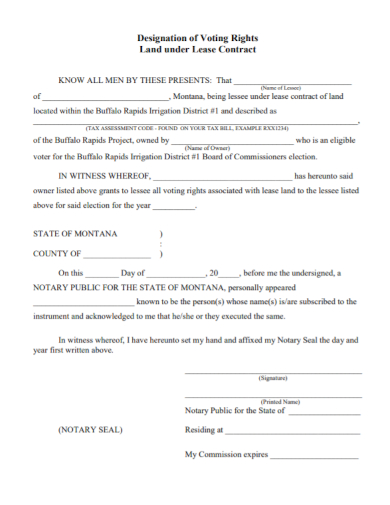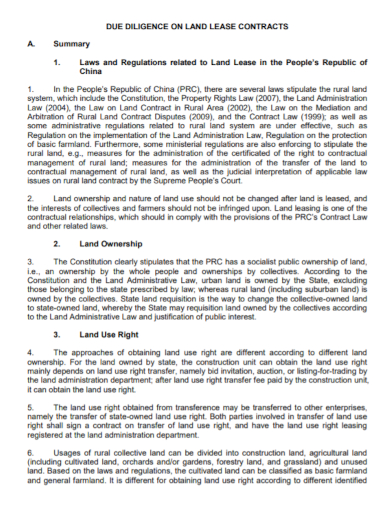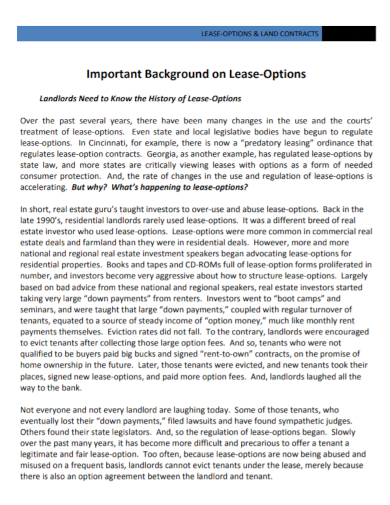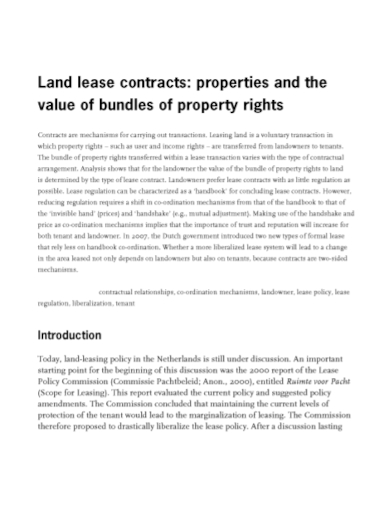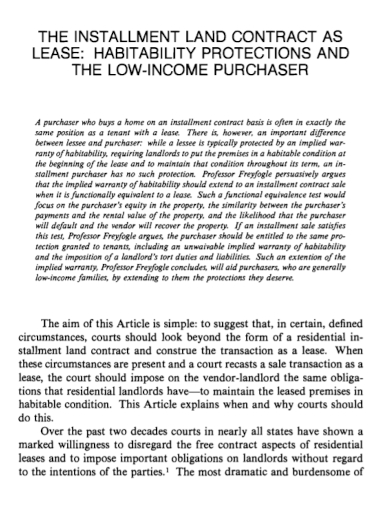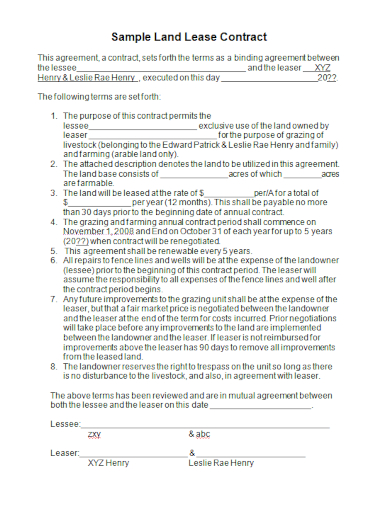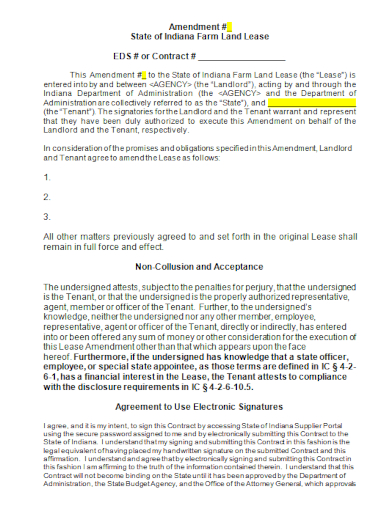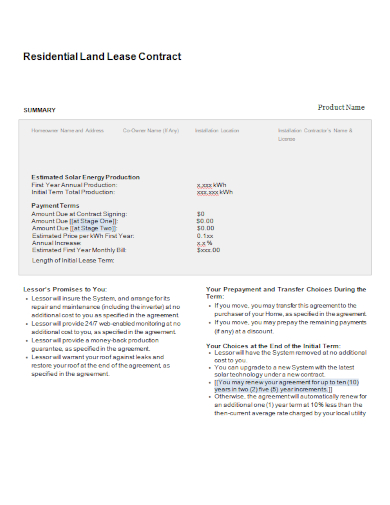The market value of land property is something that steadily rises over the course of time. This is especially true when it comes to land that has a strong competitive edge in both the commercial and domestic marketplace. This could sometimes imply that they are at a favorable location in relation to a commercial area where they can be of benefit to businesses and other commercial operations. There is a lot of potential for enterprises in those locations, and even if the property is not intended for commercial use, domestic homeowners are more than eager to pursue it because of the view or the environment in which it is placed. For the time being, the best course of action for a landlord or a property owner like you is to lease the property to your prospective customers. Sure, you can utilize the site for your own purposes and start your own business, but leasing it out to potential tenants can be considerably more convenient for you, but there is a great deal more risk involved as well. A well-written land leasing proposal is an excellent strategy to reduce the likelihood of these dangers occurring. It is important to have a document in place that ensures that both you and your client are on the same page regarding the overall conditions of your agreement.
Lease proposals, like the majority of proposal documents, do not truly propose anything to your customers. Rather, it serves as a response to your clients’ inquiries concerning the terms and circumstances of the lease that they would be entering into with your organization. As the owner of the property, it is critical that you be able to provide your client with a well-written lease proposal in order to safeguard both your rights as a property owner and the property itself. Beyond serving as a working document between you and your client, the document also serves as a kind of protection for you in the event that either or both of you encounter a legal problem. Because of the document’s structure and substance, you’ll have an enormous competitive advantage in court. It can assist you in ensuring that whatever your customer may be doing in your property is well within the limitations that you and your client have negotiated beforehand. This is critical since there have been some baffling instances in which landlords have been conned out of their homes simply because they did not have the necessary paperwork and documentation to defend themselves. Make the most of the document that you are about to write by looking over these land leasing proposal samples, which we have provided for you in the next section. In the event that you decide to construct your own property lease proposal once you have been familiar with the document and have read through the samples, feel free to use them as recommendations or even as templates.
9+ Land Lease Contract Samples
1. Land Under Lease Contract
2. Due Diligence Land Lease Contract
3. Financing Land Lease Contract
4. Lease Option Land Contract
5. Contractual Agreement of Agriculture Land Lease
6. Land Property Lease Contract
7. Land Installment Lease Contract
8. Land Lease Contract
9. Farm Land Lease Contract
10. Residential Land Lease Contract
What Is a Land Lease Contract?
A land lease contract is a document that property owners or landlords, such as yourself, might use to respond to a client’s enquiries about the terms and conditions of the lease that they are planning to sign with your organization. It is possible to outline the property being considered as well the terms and circumstances that the landlord will give to their prospective renters in this document, among other things. Prospective clients can study various proposals from a variety of properties and compare which terms and conditions are most favorable to them using this form. Owners of real estate, on the other hand, can write the agreement with greater independence because it solely pertains to their own property. Leasing proposals are extremely useful tools to have, especially when landlords are trying to determine whether or not their prospective tenants are reputable and trustworthy enough not to cause any harm to the property. The overall nature of the agreement makes lease offers more difficult to manage than rental proposals, which makes them more difficult to administer than rental proposals. Rental proposals only endure for around 1-2 months, but lease proposals have at least a year or more for its duration, making the total deal a little bit complicated to terminate.
How To Write a Land Lease Contract
A lease proposal must be able to cover a wide range of provisions in order to ensure that the document does its job of protecting you and your property as effectively as possible. It is common for property owners to have their attorneys or legal advisors draft the document on their behalf in order to ensure that all legal aspects of the document are covered completely. Certain provisions may be included in the draft, though the nature of the land that you will be leasing or the nature of the business that will be conducted on site will have a significant impact on whether or not these provisions are included. Regardless of the shape or size of your document, it must always be able to cover the provisions listed below, regardless of its format.
- Title
The title of your document should be “Lease Proposal,” which is an appropriate term. Include the property number or solicitation number of the land that is being offered for sale in the advertisement. If possible, it would be beneficial to provide the dates on which the listing was created. - Address Describe the surrounding environment in which your property is situated. In addition to the state, the physical address, the city, and the ZIP code must be provided. If you are unable to offer an exact address for the property, you can also provide particular physical descriptions of the property.
- Details Provide precise information on the space that will be rented, such as a description of the floor layout and the total square footage of the space available. There should be sufficient information in the specifics to demonstrate how the rate is broken down in order to arrive at the set of payments that you have specified.
- Fees Making use of the measurements that you have taken previously, calculate the total rental fee for the entire term. Divide the material into manageable chunks so that the tenant may readily comprehend it. It would also be beneficial if you could explain how you arrived at that figure.
- Additional Information Draw attention to the property’s additional features, such as additional parking and storage space. In addition, give the number of available parking spaces per person in the parking lot. Some states may have varying parking costs for different types of properties, so you must make sure to include that information in your listing as well.
- Renewal options Distinguish the differences between the initial lease proposal and the agreement to extend the lease. If you intend to increase your rent on a monthly basis or if you wish to change the payment term, you must notify your landlord as soon as possible.
- Signatures Provide a section at the bottom of the paper where both you and your client can sign the proposal to make it legally enforceable. If you want to ensure that the agreement is legally binding, you can have it signed by your legal advisors or attorneys as well as your accountants.
FAQs
What does it mean when a house is for lease?
A lease is a legally binding contract that outlines the requirements of one party and requires the other party to agree to those terms. The paperwork ensures that the tenant has complete access to the property and that the landlord receives all of the rent payments on a regular basis for a defined period of time.
Is leasing better than renting?
If you want a long-term commitment from your arrangement, a lease may be the best option for you. Most landlords prefer leases over rents because leases are intended to provide a great deal more stability and long-term occupancy than rental agreements.
What is the difference between a lease and a rent?
The only difference between the two is the amount of time that they span in terms of duration. A rental agreement is typically for 1-2 months, whereas a lease is typically for at least a year and maybe much longer.
Essentially, the only difference between these two is the length of time that they cover in terms of total duration. Rental agreements are usually for 1-2 months, whereas leases are often for at least a year and sometimes even for several years.
Related Posts
Sample Material Lists
Sample Excuse Letter for School
Feature Writing Samples
FREE 14+ Sample Music Concert Proposal Templates in MS Word | Google Docs | Pages | PDF
FREE 10+ Security Guard Contract Samples in PDF | MS Word
FREE 10+ Assurance Agreement Samples In MS Word | Google Docs | Apple Pages | PDF
FREE 10+ Option to Purchase Agreement Samples in MS Word | Apple Pages | PDF
FREE 26+ Curriculum Form Samples in MS Word | PDF
FREE 20+ Cleaning Service Proposal Samples in PDF | MS Word
FREE 29+ Sample Loan Application Form Templates in MS Word | PDF
FREE 10+ Event Venue Contract Samples in PDF | MS Word | Pages | Google Docs
FREE 10+ SBAR Samples in PDF | DOC
FREE 12+ Music Band Contract Templates in PDF | MS Word
FREE 10+ HVAC Maintenance Contract Samples in PDF | MS Word
FREE 10+ Social Media Marketing Contract Samples in MS Word | PDF

